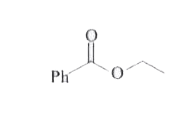Which of the following compounds on hydrolysis yields a carboxylic acid and a secondary amine?
CH3CH2NC
CH3CONHCH3
PHNHCOCH3
PhCoN∣CH3Ph
The correct Answer is:D
To solve the question, "Which of the following compounds on hydrolysis yields a carboxylic acid and a secondary amine?", we need to analyze the compounds provided and identify the one that contains a peptide bond. The peptide bond is characterized by the structure C(=O)-NH, which is crucial for the hydrolysis to yield the desired products.
1. Understanding Hydrolysis: Hydrolysis involves the reaction of a compound with water (H2O), leading to the breakdown of the compound. In the context of amines and carboxylic acids, we are particularly interested in compounds that can yield a carboxylic acid (RCOOH) and a secondary amine (R2NH).
2. Identifying Peptide Bonds: A peptide bond has the structure C(=O)-NH. This bond is typically found in amides and peptides. We need to look for compounds that contain this bond, as hydrolysis of such compounds will yield a carboxylic acid and an amine.
3. Analyzing the Options:
- Option 1: Check if it contains a peptide bond. If it does not, it cannot yield the desired products.
- Option 2: Check for the presence of a peptide bond. If it has the structure C(=O)-NH, it is a candidate.
- Option 3: Again, check for the peptide bond.
- Option 4: Look for the absence of hydrogen atoms attached to nitrogen, which is necessary for the formation of a secondary amine upon hydrolysis.
4. Determining the Correct Compound:
- After analyzing all options, identify which compound has a peptide bond and does not have hydrogen atoms attached to the nitrogen. This compound will yield a carboxylic acid and a secondary amine upon hydrolysis.
5. Conclusion: The correct compound is the one that meets the criteria above.
Final Answer:
The compound that yields a carboxylic acid and a secondary amine upon hydrolysis is the one with a peptide bond and no hydrogen attached to the nitrogen.
- Option 1: Check if it contains a peptide bond. If it does not, it cannot yield the desired products.
- Option 2: Check for the presence of a peptide bond. If it has the structure C(=O)-NH, it is a candidate.
- Option 3: Again, check for the peptide bond.
- Option 4: Look for the absence of hydrogen atoms attached to nitrogen, which is necessary for the formation of a secondary amine upon hydrolysis.
- After analyzing all options, identify which compound has a peptide bond and does not have hydrogen atoms attached to the nitrogen. This compound will yield a carboxylic acid and a secondary amine upon hydrolysis.
The compound that yields a carboxylic acid and a secondary amine upon hydrolysis is the one with a peptide bond and no hydrogen attached to the nitrogen.
Topper's Solved these Questions
- AMINESBOOK - VMC MODULES ENGLISHCHAPTER - AMINESEXERCISE - IN CHAPTER EXERCISE -A
10 Videos
- AMINESBOOK - VMC MODULES ENGLISHCHAPTER - AMINESEXERCISE - IN CHAPTER EXERCISE -B
10 Videos
- AMINESBOOK - VMC MODULES ENGLISHCHAPTER - AMINESEXERCISE - SOLVED EXAMPLES
21 Videos
- ALDEHYDES,KETONES & CARBOXYLIC ACIDS BOOK - VMC MODULES ENGLISHCHAPTER - ALDEHYDES,KETONES & CARBOXYLIC ACIDS EXERCISE - IN-CHAPTER EXERCISE-M
10 Videos
- ATOMIC STRUCTUREBOOK - VMC MODULES ENGLISHCHAPTER - ATOMIC STRUCTUREEXERCISE - JEE Advanced (Archive )
67 Videos
Similar Questions
Knowledge Check

Which of the following compound on hydrolysis gives reactant (A):A B
B C
C D
D
Which of the following compounds is an amine?
A B
B C
C D
D
Which one of the following compounds gives carboxylic acid with HNO2 ?
A B
B C
C D
D
Cellulose on hydrolysis yields
View SolutionWhich of the following compound undergo hydrolysis most easily :
View SolutionWhich one of the following compounds gives carboxylic acid with HNO2?
View SolutionWhich of the following compounds on basic hydrolysis will gives formaldehyde ?
View SolutionWhich of the following reactions does not yield an amine?
View Solution
